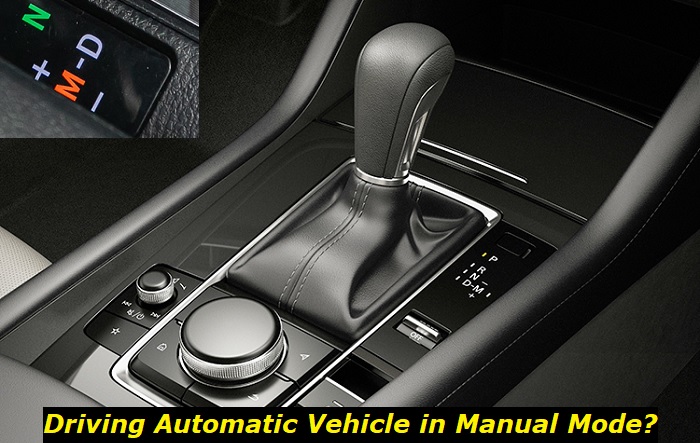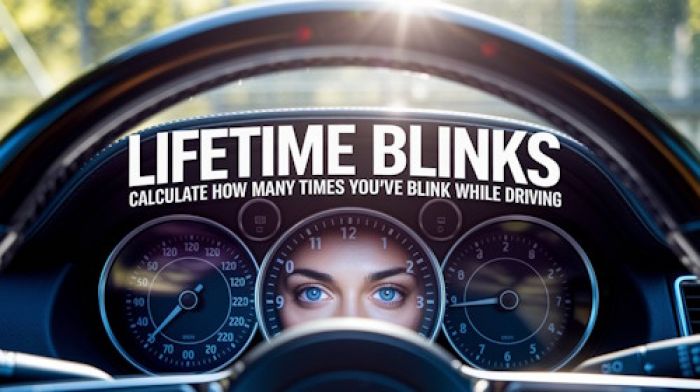The automatic transmission has been a staple of the automotive industry for many years, providing a smooth and effortless driving experience. Automatic transmission is especially helpful for drivers who lack the confidence to drive a manual or would prefer the car to take control of the shifting for any reason.
Proper use of transmission highlights
- Level of importance:High
- Time interval:Always
- Needed expertise:Basic
- Needed tools:No tools
- Time taken:No time needed
- Possible issues:Transmission failing, parking pawl damage, overheating of the gearbox, issues with torque converter, problems with overloading.

What Does Manual Mode Do?
Manual mode gives the driver control over an automatic car's transmission as if they were driving a manual vehicle. The driver will have the ability to upshift and downshift the car, though they won't need to use a clutch.
Depending on the car, you might shift gears using the gearstick or with paddle shifters located on the steering wheel.
Benefits of Driving in Manual Mode
Automatic transmission is designed to make the driving experience as smooth as possible. However, driving in manual mode provides some benefits that experienced drivers might wish to take advantage of.
We'll take a look at some of these benefits, and discuss why driving in manual mode might be more suitable for you and your driving style.
1) Increased Control
When you drive with your car in automatic mode, the shifting of the transmission is left to the car's transmission computer to decide. The transmission computer makes use of input data from several sensors in the car to decide when the car needs to make a downshift or an upshift. Depending on how this transmission computer is programmed, the transmission may shift too gently or too aggressively for a driver's particular tastes.
Switching the car to manual mode gives you full control over the transmission and the shifting. This allows the driver to shift gears per their driving style or preference.
2) Increased Fuel Economy
The transmission computer in your car is normally calibrated to optimize performance and fuel economy. However, sometimes these computers are not programmed to do this perfectly. Depending on the make and model of your car, your vehicle might be better at managing its fuel through gear shifts.
However, an experienced manual driver will develop a feel for the right time to shift, and in many cases will be able to handle the gears in a way that is more fuel efficient than an automatic transmission can manage.
3) Better Performance
In many cases, an experienced manual driver will be able to outperform an automatic transmission. Many modern cars, especially high-performance cars like sports cars, have highly effective transmission computers that do well at shifting for performance. However, many of these cars can only match the most experienced manual drivers at best.
Potential Issues When Driving in Manual Mode
Despite the advantages of driving your car in manual mode, there are still some potential issues to look out for. Generally, driving in manual mode is safe for the car, and will not cause damage to the transmission or engine components if done correctly.
When driving in manual mode, your car doesn't make any mechanical changes to how the transmission operates. The transmission system works in the same way, but the transmission computer will relinquish control to the driver.
Any issues that may arise from driving an automatic vehicle in manual mode, are usually a result of improper operation, or lack of experience operating a manual vehicle.
Let's take a look at the potential problems and issues that might arise when driving an automatic car in manual mode.
1) Stress on the Gears and Transmission
Automatic transmissions are designed to change gears automatically based on the vehicle's speed and other driving conditions. The car's transmission computer handles this by looking at the driving conditions and deciding the best times to shift based on the car's speed and engine RPMs. When an automatic transmission is operating normally, shifting is done efficiently with little wear on the transmission.
After switching to manual mode, the responsibility of shifting is placed completely on the driver. This means that it's up to the driver to correctly upshift and downshift at the appropriate times based on the car's speed and RPM. Many drivers don't have sufficient experience to monitor these stats and shift more effectively than their automatic transmission.
This inefficient shifting will place more strain on the transmission components, such as the gears. The extent of damage will depend on how bad the shifting is. Late or early shifting might result in some wear on the system, while incorrect gear selections could cause more significant damage to the transmission.
Driving your car in manual mode without proper shifting technique could result in your transmission giving up much sooner than its intended lifespan. This can lead to costly transmission repairs and every driver's nightmare.
2) Increased Risk of Accidents
Although neither transmission type is inherently safer than the other, driving in manual mode can increase the risk of accidents for less experienced drivers. This is because manual driving demands more attention from the driver.
Driving an automatic vehicle in manual mode does not require the driver to remove their foot from the accelerator pedal, or to operate a clutch when they want to switch gears. However, they will still need to keep an eye on the vehicle speed, RPMs, and general driving conditions to shift correctly. They will also need to operate the gear lever or paddle shifters.
All of these extra considerations can prove overwhelming to inexperienced drivers, or to drivers who are only used to driving an automatic transmission. These can act as distractions that could result in an accident.
Additionally, inexperienced drivers might not be familiar with how to shift gears properly, which could result in accidents as well.
3) Decreased Fuel Efficiency
Another issue that can arise when driving an automatic vehicle in manual mode is decreased fuel efficiency. An automatic transmission is designed to automatically shift gears to get as much fuel efficiency as possible. However, in manual mode, the driver is in control of the shifting. Most drivers will not have the experience necessary to shift more efficiently than the automatic transmission, which can result in reduced fuel economy.
How to Avoid Issues When Using Manual Mode
As you've probably noticed, the issues that come with driving your automatic vehicle in manual mode come from the driver.
- Learn How and When to Shift Properly
One of the most important things is to learn how to drive correctly in manual mode. This means you should practice and learn when to shift gears, which gears to use in which driving conditions, and how to downshift properly.
If you can, it is important to practice driving in manual mode in a safe environment. This will help you get used to driving in manual mode and prevent you from damaging the transmission through improper shifting.
- Pay Attention
Another important way of avoiding issues when driving in manual mode is to make sure to pay close attention to driving conditions. Make sure to keep an eye on your car's speed, RPMs, and current gear. This will help you shift the correct gear and will make sure you avoid shifting too soon or too late.
You should also learn to keep an eye on these things while watching out for other cars on the road. This will help you remain focused and keep you out of accidents.
Conclusion
Driving an automatic car in manual mode is a great way of enjoying the benefits of a manual transmission, even in an automatic vehicle. There are some concerns that driving an automatic in manual mode might be bad for your car, but in reality, it does not cause any damage to the car on its own.
Driving an automatic vehicle in manual mode provides certain benefits, like increased control and improved fuel efficiency. However, there is a potential for issues and problems to arise when driving in manual mode. These typically come about because of driver error or inexperience. Some of these problems are potential damage to the transmission, increased risk of accidents, or reduced fuel efficiency.
About the authors
The CarAraC research team is composed of seasoned auto mechanics and automotive industry professionals, including individuals with advanced degrees and certifications in their field. Our team members boast prestigious credentials, reflecting their extensive knowledge and skills. These qualifications include: IMI: Institute of the Motor Industry, ASE-Certified Master Automobile Technicians; Coventry University, Graduate of MA in Automotive Journalism; Politecnico di Torino, Italy, MS Automotive Engineering; Ss. Cyril and Methodius University in Skopje, Mechanical University in Skopje; TOC Automotive College; DHA Suffa University, Department of Mechanical Engineering






Add comment